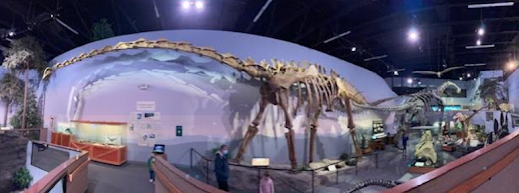Welcome to my free coloring pages blog!
Today the new drawing is of the huge Supersaurus. The drawing is of her laying her eggs.
Supersaurus Mother laying Her Eggs
The Supersaurus was a very large Sauropod. Supersaurus was one of the very longest dinosaurs as well. It was related to Diplodocus or possibly to Apatosaurus. Supersaurus was around 138 feet or 42 meters long. It had a whip-like tail that was so powerful that some paleontologists have wondered if it could be cracked like a whip so fast that it broke the sound barrier. This could be a defense mechanism against Theropod carnivorous dinosaurs who would be the Sauropods' main enemies.
Supersaurus lived in the Jurassic Period along with the very tall Brachiosaurs and the heavily built Apatosaurs. More precisely Supersaurus lived 157-145 million years ago. It lived in what is now North America.
Supersaurus may have weighed up to 80,000 pounds. That is 40 tons. That is almost 36,300 kg. Supersaurus would have weighed even more but it appears that it was built more gracile, like Diplodocus. However, as I already mentioned, some paleontologists now think that Supersaurus was a closer relative to Apatosaurus. Apatosaurus was more heavily built than Diplodocus so maybe this weight estimate will go up.
When I first fell in love with dinosaurs over 50 years ago we did not know about dermal spines on Sauropods. In 1992 dermal spines or spikes were found on a Diplodocus skin impression. This led to the conclusion that many, and maybe most of the Sauropods had this kind of dermal armor to help defend themselves from the large predatory Theropods. Of course, their massive size was their best defense. One whip of that huge tail could have shattered Theropod bones. And an injured hunter is a doomed hunter. Maybe the biggest Sauropods, the ones from South America, did not need dermal armor. Sauropods singing their huge neck might have also been a defensive maneuver when necessary. It is incredible if you think of the huge size of the muscles of a Sauropod tail or neck. There was a LOT of power there! I think that being hit by a Sauropod tail would be like being hit by a semi-truck!
SOME Sauropod eggs have been found in a line. So it appears that some Sauropods laid eggs as they slowly walked along. Sauropod eggs in nests have been found in Argentina so some Sauropds DID lay eggs in nests. One theory is that Sauropods laid eggs near a forest so that when the eggs hatched the hatchling dinosaurs could rush into the forest for cover. There in the forest, the babies would grow. When they first hatched they were no bigger than an adult goose or swan. But they grew very very fast and went from around 10 or 11 lbs. to 10,000+ times that size in 18 or 20 years. The "lay 'em and leave 'em theory on Sauropod egg-laying and lack of parenting of hatchlings also says that when the Sauropod was about as big as an elephant they could leave the forest and be welcomed into the migrating herd.
Supersaurus probably kept its head rather horizontal most of the time and it may have used its long neck to reach into forests to feed on ferns off the forest floor. It is also possible that they knocked down trees like modern elephants do. Brachiosaurs had more spoon-like teeth but Diplodocids and Apatosaurs had teeth that were more peg-like. Peg-like teeth may have been more useful for stripping soft fern and cycad leaves. While spoon-like teeth may have been more useful to strip tougher food like pine needles and maybe even bark.
Sauropods swallowed rocks to help grind up their food in their stomach. Those rocks are called "gastroliths... and they kind of feel greasy because the stomach acid and rubbing against other stones and plant matter has worn the gastroliths so very smooth.
Gastroliths
An interesting fact is that Sauropod eggs were perfectly round. They looked like an oversized cantaloupe. Cantaloupe is also called musk melon, rockmelon, and winter melon. The eggshells were about 1-4 inches thick.
Photo of Supersaurus skeleton at Museum of Ancient Life
IF you want to see a Supersaurus skeleton then go to the Museum of Ancient Life at Thanksgiving Point in Lehi, Utah. Their specimen is around 120 feet long. A longer one is found at the Wyoming Dinosaur Center in Thermopolis, Wyoming.
NOTE: This new drawing of Supersaurus can be found by clicking on the button labeled Paleontology and scrolling down to the bottom of the list. Then click on the title and print your picture to color. I will also post down below some other drawings of Sauropods from past posts.
Argentinosaurus at Nesting Site
(This is how the Sauropods in Argentina laid eggs... in nests with leaves on the eggs.)
Supersaurus feeding on a Cycad Tree
(This is an earlier drawing of a Supersaurus. Notice the same type of Pterosaur in the air.
Both Supersaurus drawings have Rhamphorynchus Pterosaurs flying in the picture.)
Patagotitan mayorum the Biggest Dinosaur
(Sauroposeidon was 60 feet tall!!!)








No comments:
Post a Comment